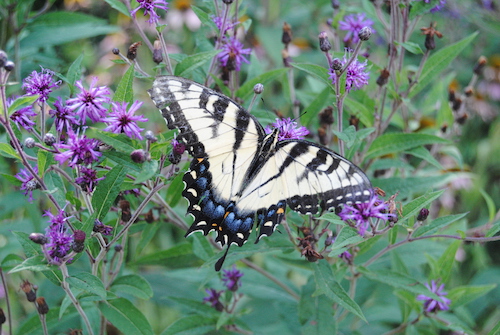Pollination Partnerships

Flowering plants attract different types of pollinators from bees to butterflies, ants, or moths. In this hands-on program, we explore the fascinating adaptations and interconnections among flowering plants and their insect pollinators. Students will closely observe and identify a diversity of local insect pollinators and the wildflowers they frequent. Students will also observe and discuss the adaptive behaviors of various pollinators at flowers, as well as study the adaptations of various wildflowers that ensure successful pollination.
Grade Levels, Program Length, and Season
- Appropriate for Grade Levels 3-8
- This program lasts 1 1/2 hours and can be adapted to suit the needs of your group
- The program is offered May through mid-October
Program Description and Activities
Your students will be engaged in a multifaceted program experience that may include:
- Closely observing and identifying a diversity of local insect pollinators and the wildflowers they frequent.
- Using microscope and in the field, students study the physical adaptations of various wildflowers and their associated pollinators.
- Comparing and contrasting the adaptations of insect pollinated plants with wind pollinated plants.
- Investigating and discussing simple ways to create a backyard “pollinator garden” that can help to reconnect native plants and their insect pollinators in our residential spaces.
